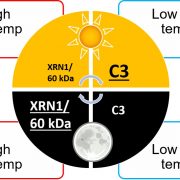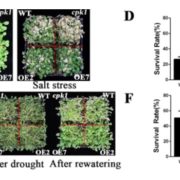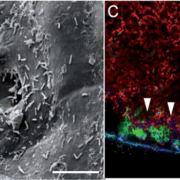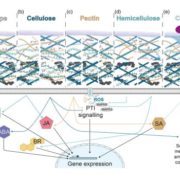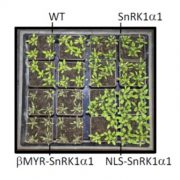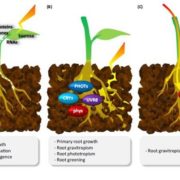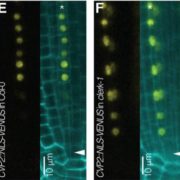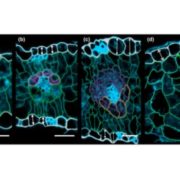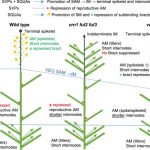Functional interaction of nitrate signaling regulator NLP7 and N-degron “recognin” PRT6 enhances abiotic stress tolerance (Plant Physiol.)
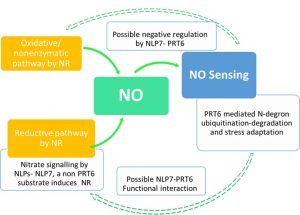 In addition to the vast array of metabolic and signaling roles, nitric oxide (NO) is prominently involved in low oxygen sensing in seeds and waterlogged plants. In Arabidopsis, the cytosolic nitrate reductase (NR) isoforms NIA1/NIA2 catalyze the reductive pathway of NO generation. NO sensing in plants constitute highly regulated proteasomal degradation of ethylene response transcription factors. PROTEOLYSIS6 (PRT6) is a “recognin” that identifies substrates containing N-degron (Cys residue after the initial Met) and polyubiquitinates them. The nitrate-coupled CPK signaling phosphorylates NLP transcription factors (NLP6/ NLP7) and reprograms the expression of downstream N metabolism and signaling genes. To understand the possible crosstalk of N degron proteolysis and nitrate signaling, Castillo et al, 2021, evaluated prt6 nlp7 double mutants and NLP7 over expressing lines in response to different abiotic stresses. Even though NLP7 was not a PRT6 substrate, there were potential cross talks among nitrate signaling, PRT6 and ABA signaling. The “nucleocytoplasmic shuttling” of NLP7, is controlled by NO abundance, posttranslational modifications and possibly by PRT6, offering a regulatory module controlling NO signaling. The possible regulatory role of PRT6 and NLP7 in the synthesis of non-NR derived NO is yet to be addressed. (Summary by Lekshmy Sathee @lekshmysnair) Plant Physiol. https://doi.org/10.1093/plphys/kiab382
In addition to the vast array of metabolic and signaling roles, nitric oxide (NO) is prominently involved in low oxygen sensing in seeds and waterlogged plants. In Arabidopsis, the cytosolic nitrate reductase (NR) isoforms NIA1/NIA2 catalyze the reductive pathway of NO generation. NO sensing in plants constitute highly regulated proteasomal degradation of ethylene response transcription factors. PROTEOLYSIS6 (PRT6) is a “recognin” that identifies substrates containing N-degron (Cys residue after the initial Met) and polyubiquitinates them. The nitrate-coupled CPK signaling phosphorylates NLP transcription factors (NLP6/ NLP7) and reprograms the expression of downstream N metabolism and signaling genes. To understand the possible crosstalk of N degron proteolysis and nitrate signaling, Castillo et al, 2021, evaluated prt6 nlp7 double mutants and NLP7 over expressing lines in response to different abiotic stresses. Even though NLP7 was not a PRT6 substrate, there were potential cross talks among nitrate signaling, PRT6 and ABA signaling. The “nucleocytoplasmic shuttling” of NLP7, is controlled by NO abundance, posttranslational modifications and possibly by PRT6, offering a regulatory module controlling NO signaling. The possible regulatory role of PRT6 and NLP7 in the synthesis of non-NR derived NO is yet to be addressed. (Summary by Lekshmy Sathee @lekshmysnair) Plant Physiol. https://doi.org/10.1093/plphys/kiab382


